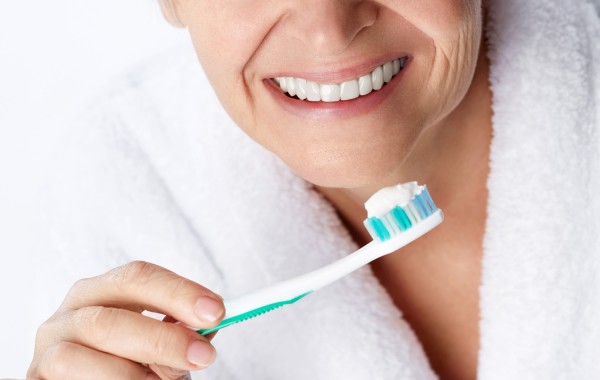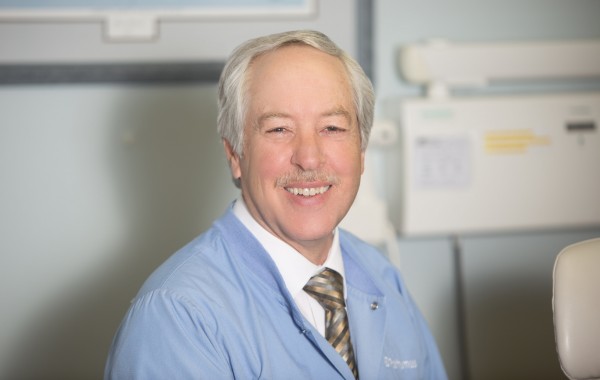-

Bridges
A bridge is a fixed dental restoration (a fixed dental prosthesis) used to replace a missing tooth (or several teeth) by joining an artificial tooth permanently to adjacent teeth or dental implants.
-

Child and Adult Cleaning
Teeth cleaning is part of oral hygiene and involves the removal of dental plaque from teeth with the intention of preventing cavities (dental caries), gingivitis, and periodontal disease. People routinely clean their own teeth by brushing and interdental cleaning, and dental hygienists can remove hardened deposits (tartar) not removed by routine cleaning. Those with dentures and natural teeth may supplement their cleaning with a denture cleaner.
-

Crowns
A crown is a type of dental restoration which completely caps or encircles a tooth or dental implant. Crowns are often needed when a large cavity threatens the ongoing health of a tooth.[1] They are typically bonded to the tooth using a dental cement. Crowns can be made from many materials, which are usually fabricated using indirect methods. Crowns are often used to improve the strength or appearance of teeth. While inarguably beneficial to dental health, the procedure and materials can be relatively expensive.
-

Dentures
Dentures, also known as false teeth, are prosthetic devices constructed to replace missing teeth; they are supported by the surrounding soft and hard tissues of the oral cavity. Conventional dentures are removable (removable partial denture or complete denture). However, there are many different denture designs, some which rely on bonding or clasping onto teeth or dental implants(fixed prosthodontics). There are Continue Reading
-

Extractions
An extraction is the removal of teeth. Extractions are performed for a wide variety of reasons, but most commonly to remove teeth which have become unrestorable through tooth decay, periodontal disease or dental trauma.
-

Fillings
A dental restoration or dental filling is a dental restorative material used to restore the function, integrity and morphology of missing tooth structure. The structural loss typically results from caries or external trauma. It is also lost intentionally during tooth preparation to improve the aesthetics or the physical integrity of the intended restorative material. Dental restoration also refers to the replacement of missing tooth structure that is supported by dental implants.
-

Fluoride Treatment
Fluoride therapy is the delivery of fluoride to the teeth, topically or systemically, to protect them from dental caries (cavities). Strictly speaking, fluoride therapy repairs rather than prevents damage to the teeth, causing the mineral fluorapatite to be incorporated into damaged tooth enamel. Fluorapatite is not a natural component of human teeth, although it is found in the teeth of Continue Reading
-

Gum Therapy
Periodontitis, also known as pyorrhea, is a set of inflammatory diseases affecting the periodontium, i.e., the tissues that surround and support the teeth. Periodontitis involves progressive loss of the alveolar bone around the teeth, and if left untreated, can lead to the loosening and subsequent loss of teeth.
-

Partials
Dentures, also known as false teeth, are prosthetic devices constructed to replace missing teeth; they are supported by the surrounding soft and hard tissues of the oral cavity. Conventional dentures are removable (removable partial denture or complete denture). However, there are many different denture designs, some which rely on bonding or clasping onto teeth or dental implants (fixed prosthodontics). There Continue Reading
-

Root Canals
A root canal is the anatomic space within the root of a tooth. Part of a naturally occurring space within a tooth, it consists of the pulp chamber (within the coronal part of the tooth), the main canal(s), and more intricate anatomical branches that may connect the root canals to each other or to the surface of the root.
-

Sealants
Dental sealants (also termed pit and fissure sealants,[1] or simply fissure sealants)[2] are a dental treatment intended to prevent tooth decay. Teeth have recesses on their biting surfaces; the back teeth have fissures (grooves) and some front teeth have cingulum pits. It is these pits and fissures which are most vulnerable to tooth decay, partly because food sticks in them and they are hard to clean areas. Dental sealants are materials placed in these pits and fissures to fill them in, creating a smooth surface that is easy to clean. Dental sealants are mainly used in children who are at higher risk of tooth decay, and typically they are placed as soon as the adult molar teeth come through.
-

Whitening
Tooth whitening (termed tooth bleaching when utilizing bleach), is either restoration of natural tooth shade or whitening beyond natural tooth shade, depending on the definition used. Restoration of the underlying, natural tooth shade is possible by simply removing surface (extrinsic) stains (e.g. from tea, coffee, red wine and tobacco) and calculus (tartar). This is achieved by having the teeth cleaned by a dental professional (commonly termed "scale and polish", see debridement and polishing), or at home by various oral hygiene methods. Calculus is difficult to remove without a professional clean.
St. Michael Dental Center
A Smile HAPPENS IN A FLASH;
ITS Memory LASTS A LIFETIME